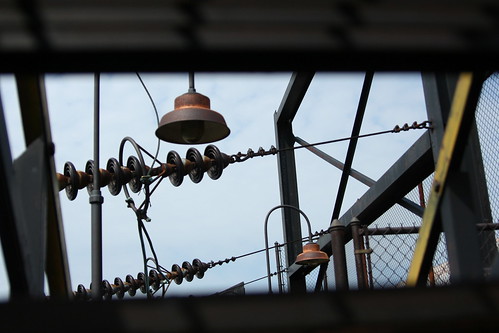In Rust Belt Tour '09, scholar Jo Guldi and activist Simon Strikeback traveled the landscape between Flint, Michigan and Holyoke, Massachusetts, documenting the foreclosures, arsons, vacant lots, anarchist squats, community gardens, and revitalization projects across eleven cities.
This conversation, recorded on the road in Western Massachusetts, offers an on-the-fly introduction to the phenomenology of landscape. How does a landscape scholar move through an environment? How do social and economic relationships produce signs that a landscape is changing?
Monday, September 14, 2009
Monday, September 7, 2009
Rust Belt Tour '09: Braddock, PA and Radical Utopianism
In 2009, the wasting steel town of Braddock, Pennsylvania hit international newspapers as an example of how post-industrial ruins could be transformed into utopian spaces after the mayors' plea for dedicated urban homesteaders to relocate to Braddock's abandoned houses. Braddock left behind a model of redevelopment pursued elsewhere, a model of urban clearances and arson that required the eviction of the urban poor. In contrast, Braddock and its mayor, John Fetterman, were lauded as pioneering a new model, based in community gardens, interracial collaboration, and public art.
Scholar Jo Guldi and activist Simon Strikeback traveled to Braddock to see the evidence of artist-directed redevelopment in the landscape. What they saw raised questions about race and economic flows in American cities.
This conversation, recorded on the road in western Pennsylvania, offers an on-the-fly description of three different models of economic regeneration in Rust Belt cities. The interlocutors compare corporate redevelopment in Homestead, PA; land-bank community gardens in Flint, MI; and community regeneration through the arts in Braddock, PA.
Scholar Jo Guldi and activist Simon Strikeback traveled to Braddock to see the evidence of artist-directed redevelopment in the landscape. What they saw raised questions about race and economic flows in American cities.
This conversation, recorded on the road in western Pennsylvania, offers an on-the-fly description of three different models of economic regeneration in Rust Belt cities. The interlocutors compare corporate redevelopment in Homestead, PA; land-bank community gardens in Flint, MI; and community regeneration through the arts in Braddock, PA.
Tuesday, September 1, 2009
Rust Belt Tour '09: Elmira, NY and Prison-based Urbanism
At the close of the Civil War, the industrial hub of Elmira, NY began to pioneer a new model of economic development: they opened a reformatory. The model served them well. In the twentieth century, nineteenth-century industry collapsed around Elmira in Albany, NY and Pittsburgh, PA. Elmira, however, survived, even flourished, thanks to a constant stream of prison-based revenue.
150 years later, what does an experiment in prison-based development look like? Is it actually a healthy form of urbanism? In Rust Belt Tour '09, scholar Jo Guldi and activist Simon Strikeback traveled the landscape between Flint, Michigan and Holyoke, Massachusetts, documenting the foreclosures, arsons, vacant lots, anarchist squats, community gardens, and revitalization projects across eleven cities.
150 years later, what does an experiment in prison-based development look like? Is it actually a healthy form of urbanism? In Rust Belt Tour '09, scholar Jo Guldi and activist Simon Strikeback traveled the landscape between Flint, Michigan and Holyoke, Massachusetts, documenting the foreclosures, arsons, vacant lots, anarchist squats, community gardens, and revitalization projects across eleven cities.
Subscribe to:
Comments (Atom)
